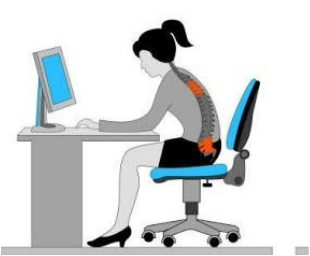Understanding the Root Causes of Back Pain
Back pain, a common ailment affecting millions worldwide, often stems from various underlying factors. Understanding these triggers is crucial for effective management.
Poor Posture and Ergonomics
Incorrect posture and ergonomics play a significant role in back pain development. Prolonged sitting or standing in awkward positions strains muscles and ligaments, leading to discomfort.

Muscle Imbalances
Muscle imbalances, wherein certain muscles are overused while others weaken, contribute to back pain. Addressing these imbalances through targeted exercises is essential for long-term relief.
Spinal Disorders
Conditions like herniated discs, spinal stenosis, and degenerative disc disease can cause debilitating back pain. Proper diagnosis and tailored treatment plans are necessary for managing these disorders effectively.

Strategies for Alleviating Back Pain
Implementing Proper Ergonomics
Maintaining a neutral spine position and investing in ergonomic furniture can significantly reduce back strain. Adjusting chair height, desk setup, and monitor position promotes better posture and minimizes discomfort.
Incorporating Regular Exercise
Engaging in exercises that strengthen core muscles, such as pilates and yoga, can improve spinal stability and alleviate back pain. Additionally, cardiovascular activities like swimming or walking promote blood flow and aid in recovery.
Practicing Mindfulness and Stress Management
Chronic stress exacerbates back pain by tensing muscles and increasing inflammation. Mindfulness techniques, such as meditation and deep breathing exercises, help manage stress levels, consequently reducing pain intensity.
Seeking Professional Treatment
Consulting with healthcare professionals, including physiotherapists and chiropractors, can provide personalized treatment plans tailored to individual needs. Modalities such as spinal manipulation, massage therapy, and acupuncture offer effective relief for many sufferers.

Preventative Measures for Long-Term Back Health
Maintaining a Healthy Weight
Excess weight places undue stress on the spine, exacerbating back pain. Adopting a balanced diet and regular exercise routine supports weight management, reducing strain on the back and mitigating discomfort.
Prioritizing Rest and Recovery
Adequate rest is essential for allowing the body to heal and repair itself. Incorporating rest periods into daily routines and ensuring quality sleep promotes optimal recovery from back pain and prevents recurrence.

Practicing Proper Lifting Techniques

Improper lifting techniques can strain the back muscles and lead to injury. Utilizing proper lifting mechanics, such as bending at the knees and keeping the back straight, minimizes the risk of back pain during lifting tasks.
Back pain is a prevalent issue affecting millions of people worldwide. Understanding the root causes of back pain is essential for effective treatment and prevention. This comprehensive guide will delve into the various factors that contribute to back pain, helping you identify and address the underlying issues.
Common Causes of Back Pain
- Muscle Strain: One of the most common causes of back pain is muscle strain. This can occur due to heavy lifting, sudden movements, or poor posture. Muscle strain often leads to acute pain and discomfort.
- Herniated Discs: Herniated or slipped discs are a significant cause of back pain. When the soft tissue inside a disc pushes out, it can press on the nerves, causing pain, numbness, and weakness.
- Spinal Stenosis: This condition involves the narrowing of the spinal canal, which puts pressure on the spinal cord and nerves. Spinal stenosis typically causes pain, numbness, and muscle weakness, especially in the lower back and legs.
- Degenerative Disc Disease: As we age, the discs in our spine can degenerate, losing their cushioning ability. This degeneration can lead to chronic back pain and reduced mobility.
- Scoliosis: An abnormal curvature of the spine, scoliosis can lead to uneven stress on the back, resulting in chronic pain. This condition often requires medical intervention to manage symptoms effectively.
Conclusion
Effectively managing and alleviating back pain requires a multifaceted approach, encompassing lifestyle modifications, exercise routines, and professional guidance. By addressing the root causes of back pain and implementing preventative measures, individuals can enjoy improved spinal health and enhanced overall well-being. Remember, consistency and dedication are key to achieving lasting relief from back discomfort.















